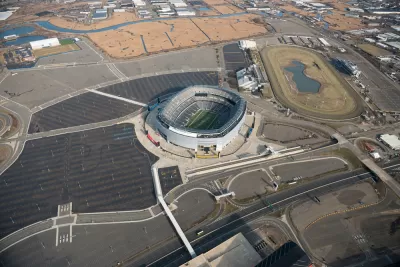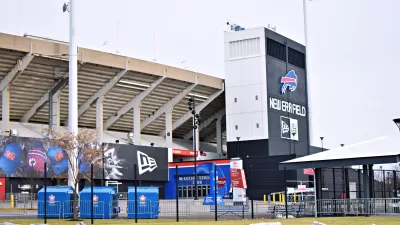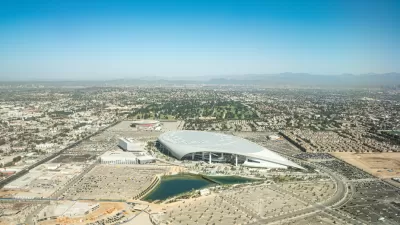There are only 30 NFL teams in the country—and many of those still have stadiums within the 15-year window of obsolescence for stadium facilities.

All ideas are on the table in an effort to revive the struggling football stadium construction industry.
The responsibility to fund the construction of new, lavish football stadiums to house the National Football League has traditionally fallen to taxpayers, but after a building boom spanning the last several years, a glut in football stadium supply has led to layoffs, declining wages, and decreasing tax revenues for local and state governments. A shortage of professional football leagues is also contributing to the football stadium construction industry's doldrums.
A bipartisan ad-hoc committee House committee convened for the first time today in an effort to address the national football stadium construction crisis, making clear that Congress intended to bail out the football stadium construction industry.
"Now that the NFL has moved to Los Angeles, and ditched those backwater dead-ends from whence they came, the football stadium industry will need new kinds of support to keep up its taxpayer subsidized quest for world domination. That's where Congress comes in," said a noticeably smug committee chairman Jerry Davis-Kraft, who spoke on behalf of all Americans.
Options discussed at the first hearing of the committee included layering NFLs on top of each other to create more need for football stadiums as well as potentially invading foreign countries and setting up American-style football leagues. A sub-committee meeting scheduled for later in the day is tasked with locating any and all urban waterfront locations in the country, except St. Louis and San Diego, for potential development.
FULL STORY: Congress to Bail Out the Football Stadium Industry

Alabama: Trump Terminates Settlements for Black Communities Harmed By Raw Sewage
Trump deemed the landmark civil rights agreement “illegal DEI and environmental justice policy.”

Study: Maui’s Plan to Convert Vacation Rentals to Long-Term Housing Could Cause Nearly $1 Billion Economic Loss
The plan would reduce visitor accommodation by 25% resulting in 1,900 jobs lost.

Why Should We Subsidize Public Transportation?
Many public transit agencies face financial stress due to rising costs, declining fare revenue, and declining subsidies. Transit advocates must provide a strong business case for increasing public transit funding.

Paris Bike Boom Leads to Steep Drop in Air Pollution
The French city’s air quality has improved dramatically in the past 20 years, coinciding with a growth in cycling.

Why Housing Costs More to Build in California Than in Texas
Hard costs like labor and materials combined with ‘soft’ costs such as permitting make building in the San Francisco Bay Area almost three times as costly as in Texas cities.

San Diego County Sees a Rise in Urban Coyotes
San Diego County experiences a rise in urban coyotes, as sightings become prevalent throughout its urban neighbourhoods and surrounding areas.
Urban Design for Planners 1: Software Tools
This six-course series explores essential urban design concepts using open source software and equips planners with the tools they need to participate fully in the urban design process.
Planning for Universal Design
Learn the tools for implementing Universal Design in planning regulations.
Smith Gee Studio
Alamo Area Metropolitan Planning Organization
City of Santa Clarita
Institute for Housing and Urban Development Studies (IHS)
City of Grandview
Harvard GSD Executive Education
Toledo-Lucas County Plan Commissions
Salt Lake City
NYU Wagner Graduate School of Public Service





























